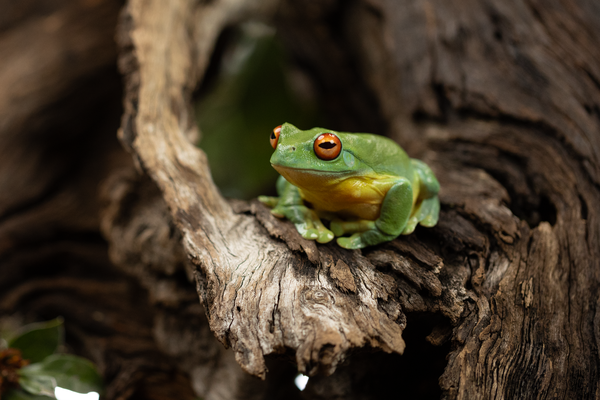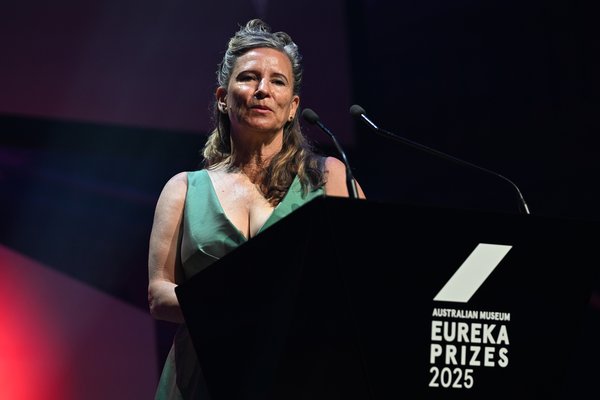Crossing continents to collaborate on conserving critters
From Bangladesh to the USA to Australia, my passion for biodiversity conservation has taken me far!

© Australian Museum
I’ve been at the Australian Museum Research Institute (AMRI) for almost three months. I’ve been working with the amphibian and reptile team, learning new techniques, gaining additional knowledge and skills, and sharing my knowledge and skills. It’s all due to an exciting fellowship opportunity that brought me from Mississippi in the southern part of the USA to Sydney.
In May 2017, I came across a fellowship opportunity that I thought could potentially help me to learn new research techniques to use in my academic curriculum and exchange ideas with my colleagues overseas, and could possibly develop a collaborative research project. I contacted the Australian Museum’s (AM) Jodi Rowley immediately and shared my plans for the fellowship and to work with AMRI. Jodi encouraged me and fully supported the idea. We worked together over a month to finish up the fellowship application process, and I was notified in early November 2017 that the application was a success!
Before I go further, here is a little background about me. I consider myself a vertebrate biologist with wide range of interests, from basic ecology to the impact of climate change. I was born and grew up in Bangladesh, a country in south Asia with loads of interesting wildlife. There I studied Bengal tigers, before getting interested into amphibians and reptiles.
While spending a lot of time in the field in search of wildlife, my long-term career goal was to be an educator. After finishing up my Bachelor and Masters degrees, I started my career as a university professor at Jahangirnagar University in Bangladesh. After several years teaching there, I moved to the USA to conduct my Ph.D at Texas Tech University, which then landed me an academic position at Delta State University in Mississippi.
One of the drivers for my application to work at AMRI was the global decline in amphibian populations, and how poorly known they are in Bangladesh. The country is going through an ‘age of discovery’ in terms of amphibians. In 2000, there were only 22 amphibian species known from Bangladesh, and now there’s almost 60 species of amphibian known! There’s a great need to help to conserve the amazing creatures, and the Amphibian and Reptile lab at the AM has the expertise and experiences to conduct similar work in other Asian countries like Vietnam.
The collaboration also benefitted me personally by gaining advanced training, which will help me in my academic activities at Delta State University (DSU). DSU is a regional teaching university in rural Mississippi located about 100 miles south of Memphis in the United States.
Learning molecular techniques was one of my major goals whilst at the museum, and Tim Cutajar helped in the process. We started with DNA extraction from the preserved tissues, amplifying specific genes using PCR technology, and verifying PCR success by running agarose gels. Chris Portway helped me to experience qDNA analysis, particularly useful for testing amphibians for the pathogen responsible for the devastating amphibian disease chytridiomycosis.
Whilst at the museum, I presented a lecture on the amphibians of Bangladesh, but I also presented a public lecture on the tigers of the Bangladesh Sundarbans. I love sharing my experience with tigers, especially of the population which are known as man-eaters! Disscussing the ecological and socio-economic aspects of a man-eating tiger population is a unique experience for both the audience and myself. We also talked about the conservation challenges the tiger in a difficult terrain like Bangladesh Sundarbans.
I wanted to share my skills and knowledge in species distribution modeling (SDM). SDM is an important tool to answer questions related to the distribution of a species and also the potential impact of climate change and other issues. During my visit, I ran two workshops on SDM with museum researchers.
Overall, the experience I gained through the fellowship is a life-time achievement for me. I am confident that I can transfer this experience into teaching at Delta State University, which will benefit a lot of young minds. The AM’s Herpetology team and I have discussed future collaborative research, particularly the amphibians of Bangladesh. So stay tuned for more!
AHM Ali Reza
Associate Professor of Biology and Environmental Sciences, Delta State University
Endeavour Executive Fellow, Herpetology, Australian Museum
About the fellowship: My visit to the Australian Museum was supported by the Endeavour Leadership Program, or popularly known as ‘Australia Awards’. This is one of most reputed scholarship and fellowship programs sponsored and administered by The Australian Government Department of Education and Training. The program aims to enhance Australia's reputation for excellence in international education through the continued internationalisation of the education, training and research sectors.










